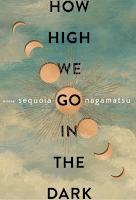I am happy to report that Becky Chambers’ latest novella in the Monk & Robot series – A Prayer for the Crown-Shy – is just as affirming, emotionally complex, and thought-provoking as its predecessor, A Psalm for the Wild-Built. There’s more musing on the place of humans in community, as well as the essential nature of ecosystems, and the human place in them, but just as much love and belief. It’s a gem.
After touring the rural areas of Panga, Sibling Dex (a Tea Monk of some renown) and Mosscap (a robot sent on a quest to determine what humanity really needs) turn their attention to the villages and cities of the little moon they call home.
They hope to find the answers they seek, while making new friends, learning new concepts, and experiencing the entropic nature of the universe.
Becky Chambers's new series continues to ask: in a world where people have what they want, does having more even matter?
I called the first novella in this series a post-apocalyptic utopia, and I stand by that description. This is the story of two beings (one a tea monk, the other a robot, a remnant of an older, crueler time) wandering a world where humans have figured out their needs, how to meet them, and how to live sustainably within their natural habitat in the meantime. It’s a lovely place to escape into and imagine. Of course, as with any place (even a fictional universe!) where there are humans, there are a few more complexities. Sibling Dex, the tea monk, describes how their society functions without capitalism, and what they see as their individual role in the world – and how they are not fitting into it now. This internal unrest contrasts with visits to various people groups as Dex and Mosscap traverse Panga’s inhabited areas.
In this second volume in the series, Chambers spends less time describing small human comforts and wonders. Crown-Shy’s focus is instead more philosophical, as the robot half of the duo asks its essential question (What do humans need?) to the people they meet on the road. When not meeting people, Mosscap is obsessed with new trees, reading, and learning about the variety of ways that humans live in and interact with the world. As befits a creature who has existed only in the wild to this point, Mosscap focuses on mundanities and mysteries that most (including Dex) would bypass, or consider scenery, or leave unknown. The result is a volume that feels deeply rooted in nature, in harmony, and in a very human puzzling about purpose, loneliness, and unpacking our feelings.
A Prayer for the Crown-Shy is, quite simply, a joy. I hope for more in the series, but am grateful for these two slim volumes if that is all there is. Chambers has managed to create a feeling of contentment in book form – both titles in the series are lovely and heart-warming reads, especially for these restless times.
Recommended for: fans of Martha Wells’ Murderbot series and first-class science fiction and fantasy, and anyone who likes quiet, thoughtful, character-driven reading.



















